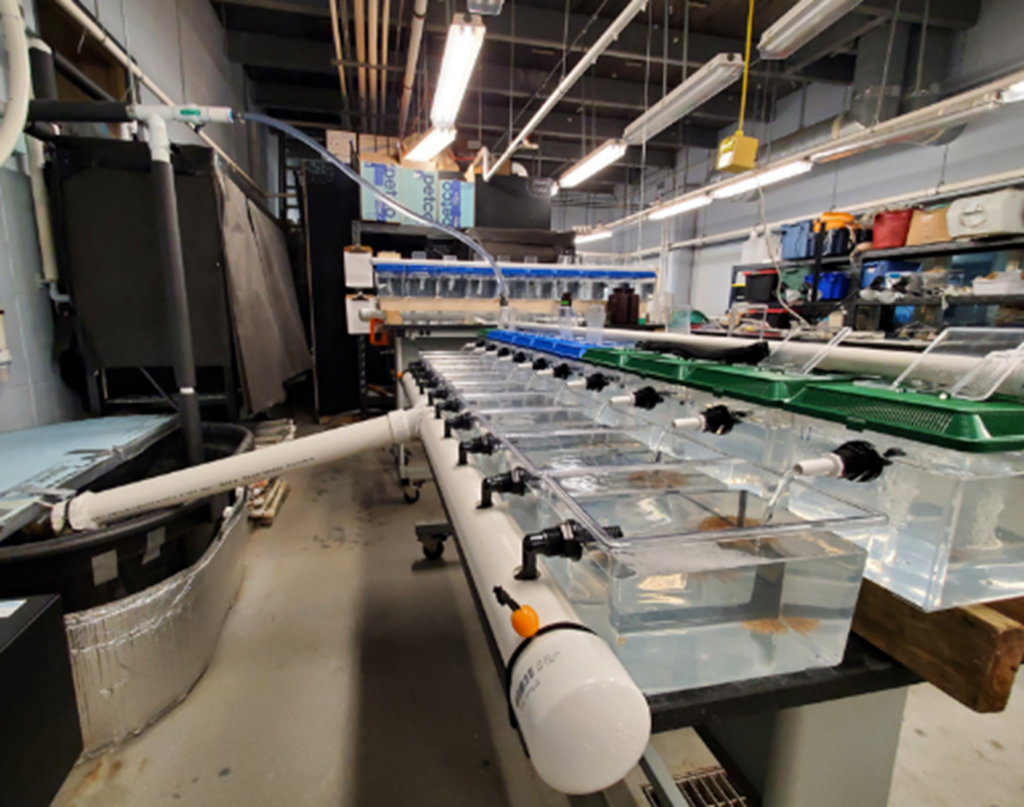While not strictly a traditional Project Baseline project, our local group of Global Underwater Explorers (GUE) Project Baseline (PB) divers have been assisting researchers at the University of Vermont (UVM) in Burlington, Vermont, USA with a lake trout study.
While lake trout here in Lake Champlain are undergoing an exciting recovery, native populations in other systems are struggling to improve and a vitamin deficiency may be to blame. Thiamin (vitamin B1) deficiencies have been observed in lake trout and other salmon and trout species with outcomes often including high offspring mortality. However, the extent of the deficiency in offspring has not been looked at in the wild, until now.
In collaboration with researchers from SUNY Brockport College located in New York, University of Vermont (UVM) grad student Matt Futia and his advisor Dr. Ellen Marsden are determining if lake trout offspring can acquire thiamin from their surroundings (e.g., their food and water) and avoid a deficiency.
In the fall of 2021, the UVM researchers collected spawning lake trout from Lake Champlain. The eggs and sperm were then expressed from the fish, placed in separate specimen containers, combined to fertilize, and then divers place the fertilized eggs in “nest bags” in two different nesting locations in the lake. In the spring of 2022, the divers then returned to the “nest bag” locations to retrieve the hatched fry for analysis. The nest locations are not very deep (20’/6m) maximum, but Lake Champlain has a very silty bottom composition in most locations, thus proficient fundamental diving skills are a definite benefit to the process of populating the nest bags and then retrieving the fry.





In addition to the eggs placed in the nesting locations, the researchers also brought fertilized eggs back to their lab at UVM. Thiamin concentrations will be evaluated throughout offspring development as well as survival. If offspring are able to obtain thiamin in the wild and survival rates are higher, this may be great news for many salmon and trout populations.



In addition to helping populate nests and retrieve fry, our GUE/PB divers have also assisted in the retrieval of data logging equipment. Specifically, the UVM researchers capture fish and implant transmitters in certain species. The researchers then deploy underwater data-logging devices that can detect fish movement when the transmitter in the fish is within a certain distance of the data-logging device. Periodically the data-logging devices are retrieved, the data downloaded, and then deployed again to capture more fish movement data. By placing many data-logging devices throughout the lake, the researchers can build a model of fish movement.
So as not to create a boating hazard, the data-logging devices are deployed underwater via a mooring, subsurface buoy, and grappling line for retrieval. Sometimes the grappling line used to retrieve the data-logger breaks and the researchers must deploy divers to retrieve the devices. Some of the data logging devices are located in 150’/45m of water which is a perfect GUE T1 dive! The researchers have GPS coordinates for the devices and will drop a reference buoy/mooring for us to follow to the bottom. Once on the bottom we conduct a sweep of the area using the reference buoy line, find the data-logger mooring, then retrieve the device.
Our GUE/PB divers always look forward to helping local researchers in any way we can. It is very rewarding when the time and energy we have put into our training can be of benefit to scientific and environmental research groups.